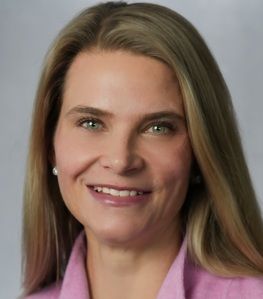- Center on Health Equity & Access
- Clinical
- Health Care Cost
- Health Care Delivery
- Insurance
- Policy
- Technology
- Value-Based Care
Using AI for the Medical Note: Game Changer or a Bridge Too Far?
During the “Tech Innovations in Community Oncology” meeting from Tennessee Oncology, oncologists explore artificial intelligence (AI) tools like DeepScribe to enhance documentation efficiency, reduce burnout, and improve patient engagement in clinical settings.
If artificial intelligence (AI) could shave hours off your most time-consuming work function, would you embrace it?
That’s the question for oncologists following the arrival of “ambient clinical listening” tools, such DeepScribe, an AI platform that assists with a core task: writing a medical note.
For physicians, documentation of a patient’s journey is a fundamental part of the job. Medical notes track progress from visit to visit and allow physicians to share what they’ve seen with others on the treatment team. Accurate notes are essential for billing, quality assurance, and legal protection.
Thus, questions of whether to use AI to create medical notes involve more than whether it’s technically possible—they also require physicians to make a philosophical leap, which is not easy for some. Yet few examples of AI in medicine offer as much game-changing potential: physicians can save 5 to 10 hours each week, reducing burnout and allowing some to see more patients.
Larry Bilbrey | Image: LinkedIn

Johnetta Blakely, MD, MS, MMHC | Image: Tennessee Oncology

Matthew Ko | Image: LinkedIn

Physicians from Tennessee Oncology grappled with these issues on June 19, 2025, during a discussion on workflow optimization that was part of the meeting, “Tech Innovations in Community Oncology.”
Moderated by Larry Bilbrey, senior director, Digital Innovation, OneOncology, the session focused on the possibilities of ambient clinical listening, or ambient scribe technology, which records a physician’s conversation with a patient and converts it to a medical note. Johnetta Blakely, MD, MS, MMHC, medical oncologist at Tennessee Oncology, shared her experiences with DeepScribe, while the company’s founder and CEO, Matthew Ko, shared his own experience caring for his mother when she had cancer, and how that experience inspired the technology.
First, Blakely shared how repetitive tasks required for EHR documentation consume much of her day—even describing herself as "a highly paid box clicker." But she also said that doctors can be rigid in their ways, a potential barrier to AI adoption.
Blakely, who said she’s often “Larry’s guinea pig” for new technology, described how DeepScribe has saved “about an hour to an hour and a half a day,” and that she has stopped bringing work home on weekends.
This time savings is typical, said Ko, who reported that “thousands” of physicians are using DeepScribe at the point of care. Not only do they save time and even improve the quality of documentation, but it can free them to engage directly with their patients, an aspect that resonates with Ko.
“I started the company [based on] my personal experience serving as a care coordinator for my mom when she had breast cancer,” he said. As a caregiver, Ko thought his mother should be the “center of the universe,” but that’s not how appointments felt. “When I [saw] the oncologist walk in 15 minutes late, look at the computer and say 3 sentences to us, I was really upset.”
As he spoke with oncologists to develop DeepScribe, Ko said he was shocked at all the tasks that await physicians once they leave the exam room.
“We picked documentation as the first problem we wanted to solve with the research that we were doing in the lab, because we thought that we could have the biggest impact there. And we're seeing this impact really play out,” he said.
Ambient scribes, he said, “are probably the fastest technology that health care has ever adopted.” A March report from Peterson Health Technology Institute concurred.
Still, there were skeptics in the room, who raised legal concerns, questions about insurance coverage, and fears that AI notes would end up with extraneous information; on the latter, Blakely said she’s found the notes to be concise. One physician said he puts great effort into writing medical notes, describing them later as “a story I tell myself,” to be appreciated when each patient returns.
Support for physicians learning to use an ambient scribe platform is essential, Ko said, because technology is only valuable if it’s trusted and used. “Technology alone doesn’t win.”
“You can have the best tech ever, but one of the most important things of having a successful implementation is having a really thoughtful change management process,” he said. “A lot of physicians are rightfully wary…[they are] not very trustful of AI.”
Beyond the Medical Note
What can AI do beyond documentation?
Blakely said Tennessee Oncology is looking for AI solutions for processing "10 million faxes a year,” for phone triage, billing optimization, and identifying additional diagnoses for more accurate coding. The AI field is highly competitive, and the practice seeks to be thoughtful to ensure it finds the right partners for these projects.
Ko said DeepScribe is developing previsit summarization tools and automated order entry. There’s more potential with ambient listening, however. With traditional methods, “roughly half of that information was not being captured,” and opportunities exist for voice analysis to generate automatic referrals, clinical trial matching, and identification of biomarkers.
Which raises the question, who pays for this?
Blakely said in her view, the time saved justifies the cost of adopting ambient listening, and practices would have to absorb it. Bilbrey, who coauthored a recent article on this technology for the American Society of Clinical Oncology, said he expects these advances “are going to be part of the cost of doing business, just like your cell phone or your laptop.”
Embracing change is hard, but necessary. “We have to accept the fact that this is a new world,” Bilbrey said, and the medical note physicians have crafted over decades will change with it. “If you’re going to use an AI scribe, you're going to have to let go of that. You're going to have to accept the fact that your note is going to look and be different.”
“It’s going to be an individual thing,” Blakely said. “This isn't going to be for everybody, and it may not be for you. But I think you it's one of those things that you have to try it and give it a shot.”
